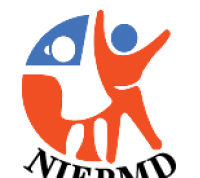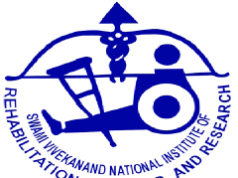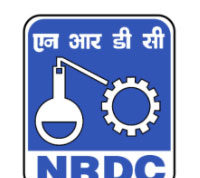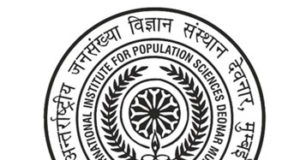
 Prof Prabhat Ranjan is currently Executive Director, TIFAC. TIFAC is set up as a Technology Think Tank and operates as an autonomous body of Dept of Science and Technology, Govt of India. Recently Prime Minister of India launched Technology Vision 2035 prepared by TIFAC under his leadership.
Prof Prabhat Ranjan is currently Executive Director, TIFAC. TIFAC is set up as a Technology Think Tank and operates as an autonomous body of Dept of Science and Technology, Govt of India. Recently Prime Minister of India launched Technology Vision 2035 prepared by TIFAC under his leadership.
Earlier he was Professor at Dhirubhai Ambani Institute of Information and Communication Technology(DA-IICT), Gandhinagar for nearly 11 years. His research area was “Embedded Systems and Sensor Networks” and he applied this to Planetary Exploration(e.g. Moon Mission), Wildlife Tracking, Nuclear Fusion, Healthcare and Agriculture. His has carried out many innovations, which have helped to put smiles on the faces of many persons with severe disability.
Before joining DA-IICT, he was full time scientist working on Nuclear Fusion in National Labs in India and USA. He made major contributions to this field for nearly two decades through modeling, data acquisition and control system and experiments.
He obtained his PhD from University of California, Berkeley and did college education from IIT Kharagpur and Delhi University. He has received many awards for his contribution to Science and Technology.
A PERSPECTIVE on MEDICAL SCIENCES & HEALTHCARE – TIFAC
Technology Information, Forecasting and Assessment Council (TIFAC)
India is emerging as a power to reckon within the world with major scientific breakthroughs and innovations in medical sciences and for it to become a leader by 2035, health has to be the engine. This calls for efficient, sustainable and inclusive healthcare systems to cover the healthcare needs of the whole population across the country, keeping in mind about the future demographics. The Technology Vision 2035 document which was released by Honorable Prime Minister of India, Shri Narendra Modi in January, 2016, foresee broadly six segments of Indians in 2035, viz. beehives and production lines; creative, innovative & imaginative; globalised & diasporas; alternative lifestyle and worldviews; rooted & remote and left out & left behind. In fact, healthcare plays a very important role for holistic human development besides education, food, shelter and few others.

Health assumes greater significance amidst the projection that over 60 per cent of country’s population of 1.53 billion by 2035 would be in the younger age bracket. This younger lot is going to be instrumental in driving the economy. Therefore, they must be healthy. However, this journey to build healthy population for a healthy developed nation is not going to be smooth, given the current challenges faced in the area of health. If there is younger pool to drive growth, there are also projections that geriatric population would assume a significant size in 2035 who would need to be looked after and provided healthcare.
The world-class doctors, clinics, technologies & well-proven strong indigenous healthcare systems are the core strengths of Indian Medical system. All this is evident in terms of growing medical tourism, which significantly contributes to the country’s gross domestic product (GDP). Eventually, IT-enabled healthcare system is playing a pivotal role in transforming healthcare scenario within the country with the advent of technologies such as tele-medicine, e-health m-health, smart cards for registration and patient’s records, non-invasive imaging, diagnostics and laboratory technology for home settings etc. These are surely bringing improvements in quality, safety, accessibility and efficiency of the health care delivery system.
Notwithstanding much strengths listed above, the medical sciences & healthcare in India faces several challenges including increasing burden of chronic life-style related diseases; emerging infectious diseases like Ebola & Zika viruses; mortality and fertility rated; inadequate infrastructure and lack of human resources; shortage of funds; health inequities; low insurance coverage etc., need due attention. Lack of public funds has led to coming up of private sector healthcare in a big way. Given with these collective challenges, India is still struggling to meet ‘health for all’ goal.
The changing scenario is expected to add more challenges in the long run. It is expected that despite accelerated rural to urban migration; more than 55 per cent of the population will continue to be in the rooted and remote areas, not by compulsion but by choice. These areas could be Himalayan high altitudes, tribal dwellings, deserts and coastal belts; providing healthcare to this population will also be a challenge.
India is also on the verge of facing the dual threat of under- and overweight. Penetration of disorders associated with over-fed people to economically weaker sections has become another source of worry. This change has more to do with urbanization, changes in the economy and the accompanying sedentary lifestyles. This has also been associated with rise of communicable diseases as well as non-communicable diseases.
Even the basic pre-requisites for health – sanitation and hygiene – are still unmet. The country could not meet the Millennium Development Goal target of halving, by 2015, the proportion of the population without sustainable access to safe drinking water and basic sanitation and now striving to achieve new sets of Sustainable Development Goals (SDGs). Nearly half of country’s population still defecates in open, even sanitation is also not a priority in many households. Perhaps the link between open defecation and diseases are poorly understood by people. The goal of health for all by 2035 will require entire population to be fully aware of basic hygiene practices.
“Technology in
the service of
India: ensuring the
security, enhancing
the prosperity and
strengthening
the identity of
every Indian.”
To sketch a fresh scenario and perspectives on technology imperatives for India in response to the paradigm changes in social, economical and technological dynamics at a global level in the last two decades, Technology Information, Forecasting and Assessment Council (TIFAC), a technology think tank under the Department of Science & Technology, Government of India, brought out Technology Vision 2035 Document taking into account the new possibilities and challenges that would take the country to the year 2035. The vision for aspiring and inspiring India in 2035 is The Technology Vision 2035 retrospects the very first articulated Technology Vision 2020 (TV 2020), prepared by TIFAC in 1996, under the leadership of uDr. A.P.J. Abdul Kalam, the then Chairman, TIFAC. This exercise explicitly provided directions for several national initiatives in science & technology to make India a developed nation by 2020. However, TV2035 exercise analyzed the progress of various sectors as envisaged in the TV 2020 document vis-a-vis their performance as on today. The metaphor of horse gait (four moves of a horse- gallop, canter, trot and walk) has been analogically fitted to show India’s progress on the expectations of TV 2020 (as shown in info-graphic below). Though, pharmaceutical sector made significant progress as on today, however, poor performance in healthcare delivery, MMR, infant mortality, life span etc. has pushed this sector into walking stage.

As an evolution of visioning exercise, Technology Vision 2035 exercise captures people’s aspirations and then suggests the optimum technological options to meet those aspirations. It considers the technological ‘peoplescape’ of India to be as important as its technological landscape, adopting a people-centric approach.
Medical Sciences & HealthCare sector occupies an important place in “Technology Vision 2035” exercise. At one hand, “Universal Healthcare and Public Hygiene” has been identified as one of the 12 key prerogatives which every Indian has to be assured of and on the other hand “guaranteeing nutritional security and eliminating female and child anemia” has been flagged as the top most technological grand-challenge to be faced by our countrymen.
The ‘Technology Vision 2035: Technology Roadmap for Medical Sciences and Healthcare’, recently released by TIFAC on 29th September 2016 at Hyderabad, identifies technology aspects related to different components of health care systems, health care delivery mechanism to unreached, sustainable health financing mechanisms and adequate human resources as being important for development of health sector.

Insights from Technology Roadmap on Medical Sciences & Health Care:
This technology roadmap on Medical Sciences & Health Care promises “Ensuring affordable and accessible healthcare to every Indian through prophylactic, promotive, curative and rehabilitative aspects of technologies”. The document is oriented to identify the technologies and strategies to improve quality of life of Indians.
The document focuses on the key aspects of health indicators such as enhancing longevity & health span, disease burden including communicable diseases, new & re-emerging infectious disease along with increasing incidence of non-communicable diseases/ life style related diseases like cardiovascular diseases, type-2 diabetes, cancer and chronic respiratory diseases. It also discussed in detail the major public health concerns about poor sanitation & hygiene conditions in India. Other basic parameters include lack of infrastructure in terms of paramedics, clinics, diagnostic centres and affordable healthcare. Recent government initiatives, ‘Swastha Bharat Abhiyan’ and ‘Swachh Bharat Abhiyan’ are very appropriate in this respect striking at the base of many diseases and to ensure a sound health for every citizen. It has further visualized an U5MR of less than 6 per 1000 and a MMR of less than 15 per 100,000, setting up of a primary health centre in every gram panchayat having remote access to specialists/super-specialists and a multispecialty hospital in every district with air ambulance and trauma care services.
In this technology roadmap, main elements of the framework for action are defined under ten missions to achieve the vision:
- – Enhancing longevity
- – Nutritional intervention
- – Health awareness
- – Mother and child healthcare
- – Control of infectious diseases
- – Novel therapeutic approaches
- – Minimization of all forms of disabilities
- – Indigenous and modern systems of healthcare
- – Rural and urban healthcare delivery systems
- – Indigenous biomedical technologies
The roadmap appropriately highlights the need for all the aforementioned sectors to meet the challenges through technological interventions such as self-diagnosis, digital health delivery and personalized healthcare etc. It also mentioned about the cutting edge interventions for raising health awareness so as to empower people to maintain a healthy environment, healthy lifestyle, controlling communicable and non-communicable diseases and dealing with other public health problems through technological solutions.

Implementation of these health technologies and attempting to identify the future concepts including bio-printing, targeted drug delivery system, next generation genomics, promoting public health practices, integration of traditional and modern health practices would transform overall health system and help in achieving defined set of Sustainable Development Goals (SDGs).
Furthermore, the document has also mentioned about Blue Sky Research areas, in all domains where applications of “real-world” are not apparent immediately. Some of these curiosity driven, exploratory and innovative ideas includes concepts like Gene manipulation to delay ageing process and increase health span & susceptibility status of the pathogen without any culture and real time monitoring of resistance status etc. are also identified in the document. The whole technology roadmap thus assimilates technologies in different timelines, policies and strategies to provide efficient and affordable healthcare to all citizens of India.

Way Forward
Enhancing the innovations in Medical Sciences & Healthcare sector, changing disease profile: shift towards life-style related disorders, rapid urbanization, affordability and accessibility issues that throw insurmountable challenges must be addressed in a serious way. It is evident that biomedical technologies possess immense potential to fuel innovation in products and delivery services in our country. In the next few decades, rapid advancement would further result in newer opportunities for technology providers, industries (biotechnology, chemical, pharmaceutical), doctors, patients, start-ups, in particular and to society in general. An effective synergy between the prime stakeholders namely research institutions, academia, industry and government is essential to ensure development, technology transfer and deployment of these technologies and also to facilitate advent of affordable products in the market. At the same time, initiatives need to be taken for creating awareness and educating people to build healthy attitude for using and adopting these healthcare technologies to its maximum. Healthy lifestyle must also be explored as an inexpensive tool towards prevention of onset of diseases. Likewise, scales of investments made by private players in the healthcare sector through public – private partnerships needs to enhance manifold to assure delivery of healthcare services to all. An ideal situation would be the convergence of advanced technologies, backed by conducive policy framework to strengthen healthcare practices to achieve the sustainable development in a holistic manner.
The world-class doctors,
clinics, technologies
& well-proven strong
indigenous healthcare
systems are the core
strengths of Indian
Medical system. All
this is evident in
terms of growing
medical tourism, which
significantly contributes
to the country’s gross
domestic product (GDP).
Eventually, IT-enabled
healthcare system is
playing a pivotal role in
transforming healthcare
scenario within the
country with the advent
of technologies such as
tele-medicine, e-health
m-health, smart cards for
registration and patient’s
records, non-invasive
imaging, diagnostics and
laboratory technology for
home settings etc.
References:
Technology Vision 2035- Technology Vision 2035 Document. 2016. Technology Information, Forecasting and Assessment Council (TIFAC), Department of Science & Technology, Government of India.
Technology Vision 2035- Technology Roadmap on ‘Medical Sciences & Health care’ 2016. Technology Information, Forecasting and Assessment Council (TIFAC), Department of Science & Technology, Government of India.
Author:
Dr. Gautam Goswami, Scientist F – TIFAC
Dr. Swati Sharma, Scientist B – TIFAC


























